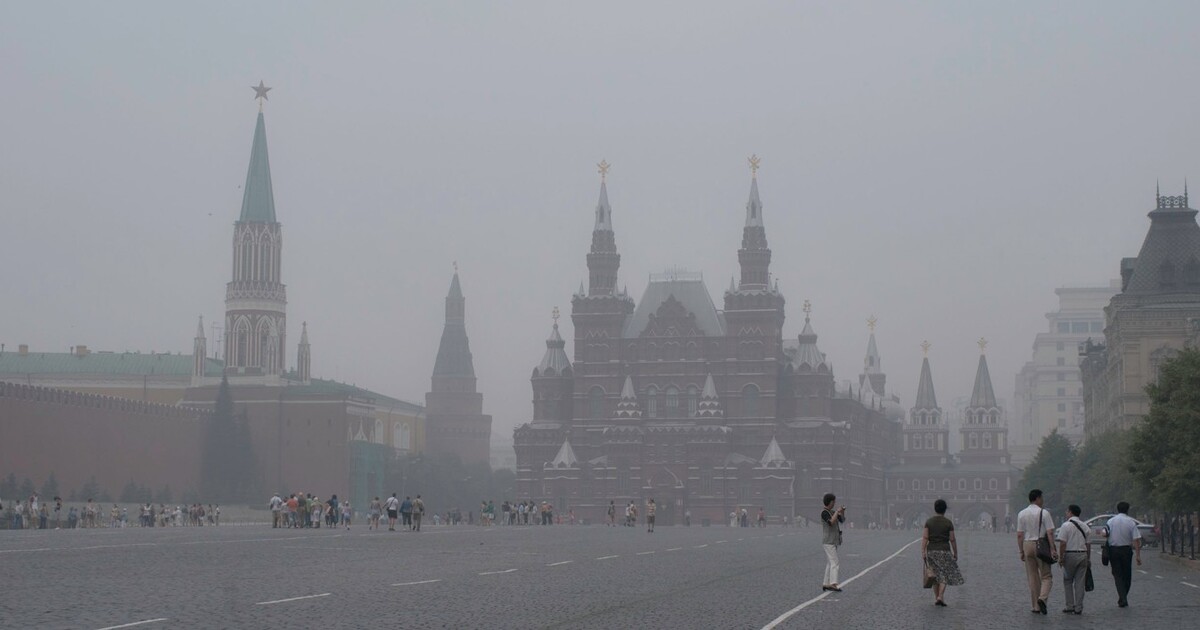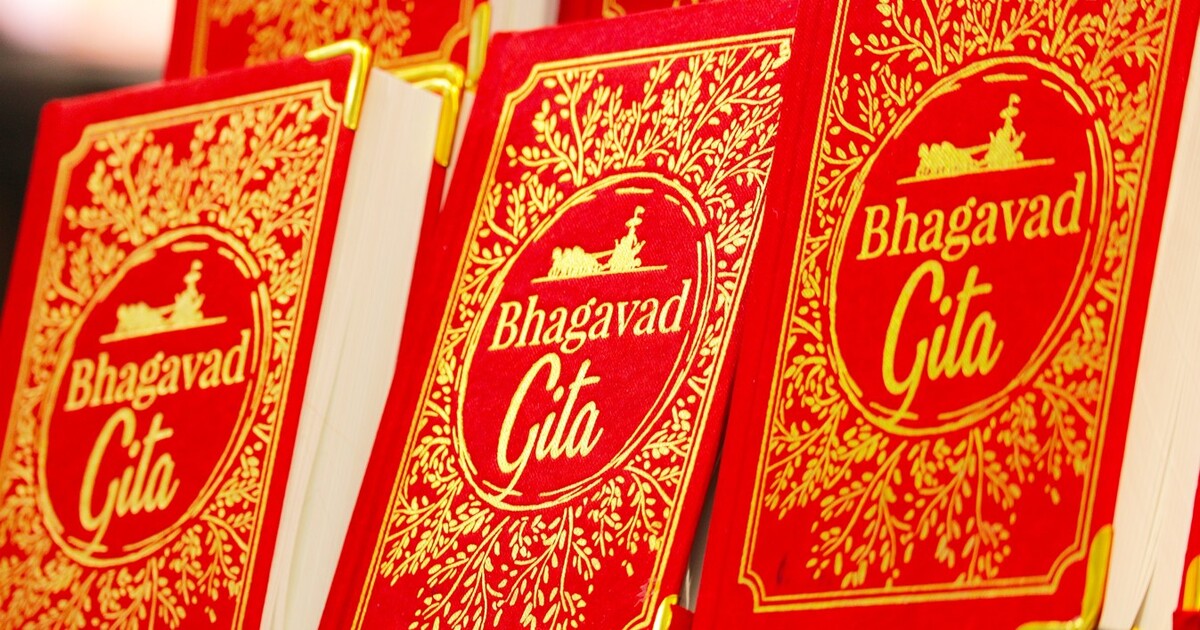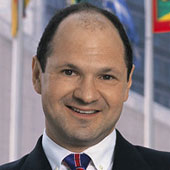How Russia Botched an Entire Century
Were it not for Putin mindlessly continuing the (self-)destructive legacy of the Bolsheviks a century ago, Russia could have been a true 21st century superpower.
August 27, 2025

A Strategic Intervention Paper (SIP) from the Global Ideas Center
You may quote from this text, provided you mention the name of the author and reference it as a new Strategic Intervention Paper (SIP) published by the Global Ideas Center in Berlin on The Globalist.
By launching a full-scale invasion of Ukraine in February 2022, Vladimir Putin isolated Russia and, in all likelihood, destroyed its economic and demographic future.
That aside, there is something which the supposedly so history-minded man who claims his top ambition to be to reconstitute the power of the Soviet Union does not comprehend.
Continuing the (self-)destructive legacy of the Bolsheviks
With his excursion into Ukraine, Putin is merely completing the task Russian leaders began when Vladimir Lenin’s Bolsheviks seized power in 1917.
Before the onset of the First World War, Russia was on the verge of becoming the China of the day. It had embarked on the path to industrial capitalism two or three decades after the United States and Germany, but it was catching up fast.
By the start of the First World War, it was developing dynamically enough to join leading industrial powers of the day.
20th century Russia: Vast, with remarkably modern elements
The early 20th century Russia was an enormous country, even larger than the Soviet Union at its peak, because it included both Poland and Finland within its borders. It boasted tremendous natural resources and a vast, diversified population.
Russia featured remarkably modern elements. For example, it abolished serfdom in 1861, two years before President Lincoln’s Emancipation Proclamation in the United States.
Breadbasket of the world
In the countryside, a class of prosperous peasants was emerging. And in Russia’s southern provinces and in Ukraine there were large, productive farms — similar to those later found in the American Midwest.
These farms made Russia the breadbasket of the world, accounting for around one-third of the global wheat trade before the First World War. In fact, Russia’s early 20th century wheat traders were so sophisticated that they initiated hedging prices and used financial markets in London and New York for their crops.
In the Donetsk region in eastern Ukraine, coal and steel production was expanding, also using British investment and knowhow.
A big oil power after 1846(!)
The Baku oil fields on the shores of the Caspian Sea began pumping oil in 1846. Moreover, the first mechanically drilled oil well was operating there a decade earlier than in Western Pennsylvania.
The Russian government at the time auctioned off oil-rich land and attracted foreign investment, notably from the Nobles and the Rothschilds. By the dawn of the new century, Baku was producing more than half of the world’s oil. It was exported by a purpose-built railway to the Black Sea.
The construction of the Trans-Siberian railway, inaugurated in 1890, linked European Russia with the Pacific coast. This made the economic development and exploration of Siberia possible, a move from which even today’s Russia benefits most handsomely.
Lagging literacy, but very modern universities
True, Russia’s educational system was poor. Around 70% of the population was still illiterate at the start of the 20th century. However, in cities, primary and secondary schools were being established, benefiting even the urban poor.
Russia also had very modern universities and a substantial scientific research establishment. Mathematician Nikolai Lobachevsky pioneered hyperbolic geometry and chemist Dmitri Mendeleev is credited with creating the first periodic table of elements, both in the 19th century.
Russian physiologist Ivan Pavlov was the fourth winner of the Nobel Prize for Medicine in 1904, followed by immunologist Ilya Mechnikov in 1908. No Russian has won the prize since.
Focus on human development
Professional and technical education, too, was increasingly open to children of lower-ranking officials, workers and even peasants. The ranks of the Russian intelligentsia, the educated class, were swelling. By the start of the First World War, the literacy rate rose to 40%.
Despite lagging behind in terms of literacy, Russia managed to develop world-class culture and arts. Tolstoy and Dostoyevsky were probably the most internationally famous and influential fiction writers of their time.
Chekhov’s plays shaped the development of theater throughout the 20th century and Gorky’s plays were performed all over Europe in the years before the First World War.
Stanislavsky developed an acting method that is still widely used in Hollywood. The Actors’ Studio and Lee Strasberg, who trained some of the brightest stars of American theater and cinema in the middle of the 20th century, adapted it.
Meanwhile, Stravinsky, Prokofiev and Shostakovich were at the origins of modern classical music, and Diaghilev’s Ballet Russe created modern dance.
In 1913, the Armory Show became a major sensation in New York City. It brought the French post-impressionist art of Van Gogh, Gauguin and others to the United States for the first time. While Americans were just catching on to these trends, Russian artists had already moved beyond post-impressionism.
Just two years later, in 1915, Kazimir Malevich created his Black Square, the first abstract painting.
An economic boom
While it is hard to assess economic growth in the early 1900s — few institutions collected data back then, any available figures were notoriously unreliable and modern statistical tools had not yet been developed — there is evidence that Russia stormed into the modern era after 1905.
There was rapid urbanization, with men increasingly moving to towns in search of employment. The share of the agricultural sector fell from 58% of the economy in 1885 to 51% before the First World War.
Meanwhile, industry, construction and transportation accounted for 32% of the Russian economy, up from 23% in 1885. The rail network increased from 2,000 km to 70,000 km.
Well-connected to global financial markets
Like all rapidly developing nations, including the United States shortly before, Russia was a huge user of foreign capital. In the final decades of the czars’ rule, foreign investment accounted for 40% of all industrial investment, and a substantial portion of agricultural investment as well.
Western Europe, notably England, France and Belgium, provided most of that capital. By the start of the First World War, Russia accounted for 15% of all international debt.
Even though early 20th century Russia was still an underdeveloped country by prevailing Western European standards, it was not as backward as it is commonly portrayed.
Confronting Europe’s leading industrial power
Just look at Russia’s performance in the First World War, when it confronted Europe’s leading industrial power, Germany.
At the start of the conflict, Russia was not only able to mobilize quickly. It also managed to deliver troops and supplies to the front fast enough to start an invasion of Galicia in September 1914.
In fact, Russia was able to help its Western allies by forcing Germany to divert forces out of France in order to assist Austria-Hungary, which was reeling from Russia’s assault.
In the First World War, Russians certainly were outmatched by German efficiency and military technology. But the czar’s troops held up a lot better than Stalin’s Red Army did in the summer of 1941.
Soviet failures and some successes
After the Bolshevik revolution, the introduction of the command economy did manage to mobilize the Soviet Union. Later on, by channeling much of the country’s immense resources into the military-industrial complex, the Communists were able to defeat Nazi Germany.
The still underappreciated, but decisive factor in that defeat was the United States’ massive Land-Lease supplies and British aid deliveries to its Far-North ports.
Thereafter, the Soviets were able to come close to matching American military prowess for around half a century.
Squandering Russia’s human resources
But such a gigantic effort could not be sustained. To get close, the Soviet government wasted and destroyed much of the resources on which Russia’s economic success relied.
First and foremost, it squandered Russia’s human resources. Russia’s population is currently around 140 million. Some demographers believe that natural growth since 1913 should have put its population to almost 200 million or even 225 million.
Two World Wars, fought by Russian commanders without regard for losses, two famines in the early 1920s and the 1930s, purges and social ills brought about by communist mismanagement have resulted in as many as 85 million in today’s Russia “going missing” — not being born at all.
Stalin’s “bourgeois pseudo-sciences”
The Communists did create a good educational system and achieved nearly 100% literacy, but they wasted human capital in other ways. For example, Stalin believed at different times that nuclear physics, computer science and genetics were “bourgeois pseudo-sciences” and sent world-renowned researchers in those fields to the Gulag.
Even Russia’s stellar performance in agriculture was reversed by the Communist regime in the service of Stalin’s ideology. Peasants were herded into collective farms, effectively reintroducing serfdom, and by the 1970s the Soviet Union was no longer able to feed itself, let alone export agricultural products.
Life expectancy for men in Russia fell below 65 years — on par with or less than in many countries in Sub-Saharan Africa. Chronic illnesses and alcoholism that often precede an early death rob society of the most productive years of its males.
Moreover, the economic system that prohibited private enterprise and discouraged individual initiative kept several generations of Russians from fulfilling their potential and benefiting society as a whole.
The Communists’ feet of clay
While pre-revolutionary Russia was developing into a major global economic power naturally and consistently, the USSR was a colossus with feet of clay.
Instead of co-leading the world, as its potential suggested at the start of the 20th century, it became, on average, one of the poorest and technologically backward countries in Europe.
The fall of communism in 1991 promised to reverse course and looked set, at long last, to fulfil its promise. It lost its fourteen colonies which became independent states, but thanks to historic and cultural ties it could emerge as a leader for the group. It restored private enterprise and invited foreign investors. There was talk of closer ties with the EU and even NATO membership.
But then, at the dawn of the new millennium, Putin became Russia’s president.
Putin: The personification of Russia’s downward tilt
In its early incarnation, the Russian government under Putin was a shameless kleptocracy. Corruption, which was a problem even during the period of reforms during the 1990s, became rampant.
Putin renationalized many previously privatized assets and placed his buddies, often the alumni of the KGB (Soviet political police) at the head of state-owned companies. Bribery, graft and kickbacks became the norm of doing business.
Under Putin, Russia colonialized itself
The investment climate deteriorated and, in a 19th century kind of way, Russia became an exporter of its vast array of raw materials to the world’s leading industrial nations. With one notable difference: It was Russia’s leader, Vladimir Putin — and not foreign powers — who turned Russia into a colonial object.
These raw material riches benefitted small, kleptocratic elites — often high and medium-level government officials who shifted their assets abroad. The country’s infrastructure was neglected, often looking like it dated from the medieval era. Social services were rudimentary, and the quality of life was extremely poor.
Things getting even worse
Unbelievable as it sounds, things in Russia got even worse. The annexation of Crimea in 2014 ushered in Putin 2.0 and the start of a full-scale war in Ukraine in 2022 sealed the transformation. Sanctions cut Russia off from the West, depriving it of quality goods and services and dooming it to technological backwardness.
Hundreds of thousands of the best and brightest — and best educated — young men left the country to avoid conscription. More than a million men have been killed or wounded in the fighting. This, and wartime uncertainty, has brought birth rates to their lowest level ever — so that the government now no longer reports its demographic data.
A vassal of China
With ties with the West severed and the domestic economy working mainly to support the war effort, Putin has mortgaged Russia’s future for the sake of his bloody misadventure and thus completed the work of his communist predecessors.
Russia, a nation whose empire 35 years ago stretched from East Berlin to Vladivostok, has undergone an epochal turnaround: It became an effective vassal of China, which used to be its client state when Mao Zedong first took power on the mainland.
A clear lesson for the U.S.
The United States has spent much of the past 100 years relentlessly developing and perfecting its industrial base and its technological infrastructure and investing into human capital. It focused on creating optimal conditions for individuals to achieve their potential.
Despite various mistakes and setbacks, the United States still sets the direction of technological innovation and its culture dominates the world.
But Russia’s experience of the past century is also a cautionary tale for the United States. Misguided policies and attacks on cultural and scientific elites can quickly destroy any country’s potential and turn a nation of formidable promise into a basket case.
Takeaways
Were it not for Putin mindlessly continuing the (self-)destructive legacy of the Bolsheviks a century ago, Russia could have been a true 21st century superpower.
With his excursion into Ukraine, Putin is merely completing the task Russian leaders began when Vladimir Lenin’s Bolsheviks seized power in 1917.
Before the onset of WWI, Russia was on the verge of becoming the China of the day. It had embarked on the path to industrial capitalism two or three decades after the U.S. and Germany, but it was catching up fast.
Early 20th century Russia included both Poland and Finland within its borders. It boasted tremendous natural resources and a vast, diversified population.
Russia abolished serfdom in 1861, two years before President Lincoln’s Emancipation Proclamation in the U.S.
Like all rapidly developing nations, including the U.S. shortly before, Russia was a huge user of foreign capital. In the final decades of the czars’ rule, foreign investment accounted for 40% of all industrial investment.
Even though early 20th century Russia was still an underdeveloped country by prevailing Western European standards, it was not as backward as it is commonly portrayed.
In WWI, Russians certainly were outmatched by German efficiency and military technology. But the czar’s troops held up a lot better than Stalin’s Red Army did in the summer of 1941.
Russia’s population is currently around 140 million. Some demographers believe that natural growth since 1913 should have put its population at almost 200 million — or even 225 million. That means as many as 85 million people in today’s Russia are “missing” — never born at all.
While pre-revolutionary Russia was developing into a major global economic power naturally and consistently, the USSR was a colossus with feet of clay.
In a 19th century kind of way, Russia became an exporter of its vast array of raw materials to the world’s leading industrial nations with one notable difference: It was Russia’s leader, Vladimir Putin — and not foreign powers — who turned Russia into a colonial object.
Russia, a nation whose empire 35 years ago stretched from Berlin to Vladivostok, has undergone an epochal turnaround: It became an effective vassal of China, which used to be its client state when Mao Zedong first took power on the mainland.
Russia’s experience of the past century is also a cautionary tale for the U.S. Misguided policies and attacks on cultural and scientific elites can quickly destroy any country’s potential and turn a nation of formidable promise into a basket case.
A Strategic Intervention Paper (SIP) from the Global Ideas Center
You may quote from this text, provided you mention the name of the author and reference it as a new Strategic Intervention Paper (SIP) published by the Global Ideas Center in Berlin on The Globalist.
Read previous

Global Diary
The Gita, AI and I
August 23, 2025

